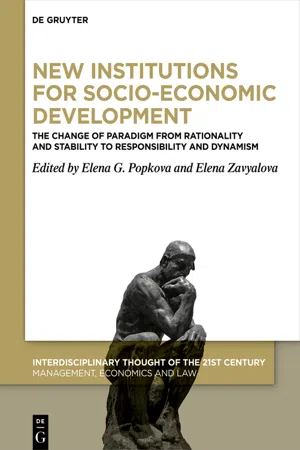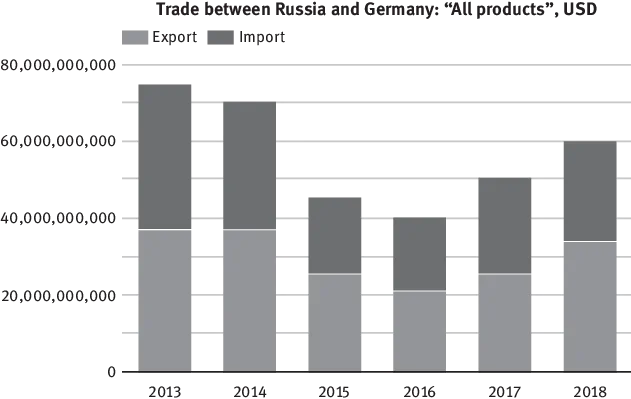
New Institutions for Socio-Economic Development
The Change of Paradigm from Rationality and Stability to Responsibility and Dynamism
Elena G. Popkova, Elena Zavyalova, Elena G. Popkova, Elena Zavyalova
- 200 pages
- English
- ePUB (mobile friendly)
- Available on iOS & Android
New Institutions for Socio-Economic Development
The Change of Paradigm from Rationality and Stability to Responsibility and Dynamism
Elena G. Popkova, Elena Zavyalova, Elena G. Popkova, Elena Zavyalova
About This Book
The strategies and practical approaches for socio-economic development are undergoing systemic changes under the influence of new developments in global economic systems and markets.
The most significant factors influencing such changes are connected to the start of the Fourth Industrial Revolution (Industry 4.0), which is impacting all economic systems to a greater or lesser extent. The creation of the digital economy and transition to Industry 4.0 particularly increases the significance of hi-tech for socio-economic development.
Secondly, there is now a transition underway from a period of unlimited globalization and comprehensive integration to more limited globalization and selective economic integration. The growing importance of regionalization on the global economic system is manifested in the formation and rapid development of new integration unions at the regional or country level (e.g., the EU and the EAEU), and company level (e.g., regional sectoral economic clusters, special economic areas, technological parks, and innovative networks).
Thirdly, there's an urgent need for faster innovation, which leads to the formation of more innovative economies. The global financial crisis drew attention to the problems of managing sustainability and achieving balance in socio-economic development. The formation and exponential growth of the information society, based on digital technologies, is now stimulating the growth and significance of corporate social and environmental responsibility as a prerequisite for entrepreneurial success.
Thus, the paradigm of socio-economic development is changing from absolute rationality (economic effectiveness) and stability – which has historically been associated with problems of stagnation – to responsibility (limited and socially-oriented rationality) and dynamism (quick innovative development based on leading technologies). This book aims to provide a scientific substantiation for this new paradigm.
Frequently asked questions
Information
Part I: Institutions of Strategic Foreign Economic Interaction and the Latest Experience of their Functioning in the Modern Global Economy
1 Definition of Strategic Directions of Modern Foreign Economic Interaction between Russia and Germany
Introduction
Methodology
Results


- German companies get the opportunity to put the sign “Made in Russia” on their products, which improves the image of Russian products when using foreign technologies;
- Inclusion of Russian companies in global production chains;
- creation of new jobs;
- tax revenues to budgets of all levels of the Russian Federation.
